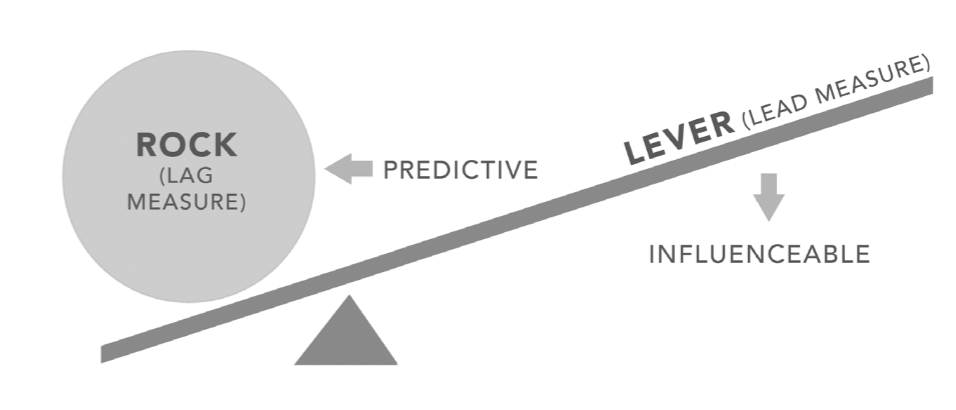This book shows how a team can execute an important goal successfully in the face of massive amount of day-to-day operations that are urgently required to keep the business running.
There are lots of urgent things (whirlwind) to do every day to keep the lights on. Failure to do so can kill the business today. However, there are also important things to take the business to the next level. Failure to do those can kill the business tomorrow. As a result, being able to execute important things successfully while doing the day job is critical for the success of the business in the long term. To help teams to do so, this book presents a methodology called 4DX that consists of four disciplines.
Discipline 1: Focus on the Wildly Important
The key of the first discipline is focus. Attempting to spread the limited capacity across multiple goals is the most common cause of failure in execution. Instead, one and only one wildly important goal (WIG) should be identified and executed.
To identify the WIG, one can ask the following question: If every other aspect of our team’s performance remained at its current level, what is the one area where significant improvement would have the greatest impact? The resulting WIG should be specific, clearly measurable and in the form of From X to Y by when (e.g. improve the NPS score from 1 to 6 by end of the year).
Discipline 2: Act on the Lead Measures
The key of the second discipline is leverage. Lag measures are the tracking measurements of the WIG and they tell you whether you achieve the WIG or not. For example, if the WIG is improving the NPS score from 1 to 6 by end of the year then the lag measure is the NP score. The issue with the lag measure is that you cannot influence it directly and it is lagging in the sense that by the time you get the result, it is already too late and the performance that drove it is in the past. In contrast, lead measures measure things that lead to the WIG and can be influenced by us directly. For example, burning 1000 calories every day is a good lead measure for a WIG of losing 20 pounds in 3 months.
Two basic characteristics of a valid lead measure are predictive and influenceable: it’s predictive of achieving the WIG and can be influenced directly. There could be many lead measures for a WIG and finding the highest-leverage ones is perhaps the toughest and most intriguing challenge for leaders trying to execute a WIG. Finding lead measures requires the involvement of the frontline team members and that involvement brings engagement and commitment. In the end, it’s the frontline team that acts on the lead measures. A leader can only veto but not dictate what the final lead measures should be. The resulting lead measures are the team’s bet: they bet that by driving these lead measures, the team is going to achieve the WIG.

Discipline 3: Keep a Compelling Scoreboard
The key of the third discipline is engagement. A compelling player’s scoreboard that clearly shows whether a team is winning or losing drives the highest level of engagement and the engagement drives the highest level of performance. The fundamental purpose of a player’s scoreboard is to motivate the players to win.
A compelling scoreboard has the following four characteristics:
It’s simple as a player’s scoreboard in a sporting event, not a more complex coach’s scoreboard.
It can be seen easily. A visible scoreboard makes sure that the WIG and lead measures are not forgotten in the constant urgency of day-to-day responsibilities.
It shows both the lead and lag measures. From the scoreboard, the team can see what they are doing (the lead measures) and what they are getting (the lag measures). Once the team sees that the lag measure is moving because of the efforts they have made on the leads, it has a dramatic effect on engagement because they know they are directly impacting the results.
It tells if a team is winning or losing immediately. If the team can’t quickly determine if they are winning or not by looking at the scoreboard, then it’s not a game, it’s just data.
Discipline 4: Create a Cadence of Accountability
The key of the fourth discipline is accountability. This is where execution actually happens. The previous three disciplines set up the game but until this discipline is applied, the team is not in the game. Without this discipline, there will always be actions the team members know they should perform but never actually do with real consistency due to whirlwind.
To create a cadence of accountability, a WIG session is held on the same day and at the same time every week with the following agenda:
Account. Report on last week’s commitments.
Review the scoreboard. Learn from successes and failures.
Plan. Clear the path and make new commitments.
To figure out the high-impact commitments for the week, ask the question “What are the one or two most important things I can do this week to impact the lead measures?” Once the commitments are made from team members, they are unconditional regardless of the whirlwind and the team member is accountable to each other.
Finally, a successful 4DX not only helps the team to achieve the specific WIG but also produces a winning team that performs at the next level and is ready for the next WIG.